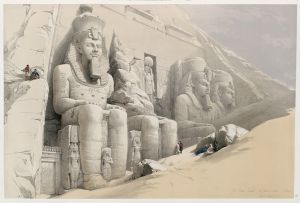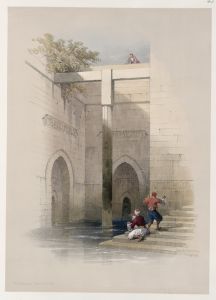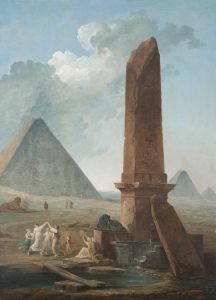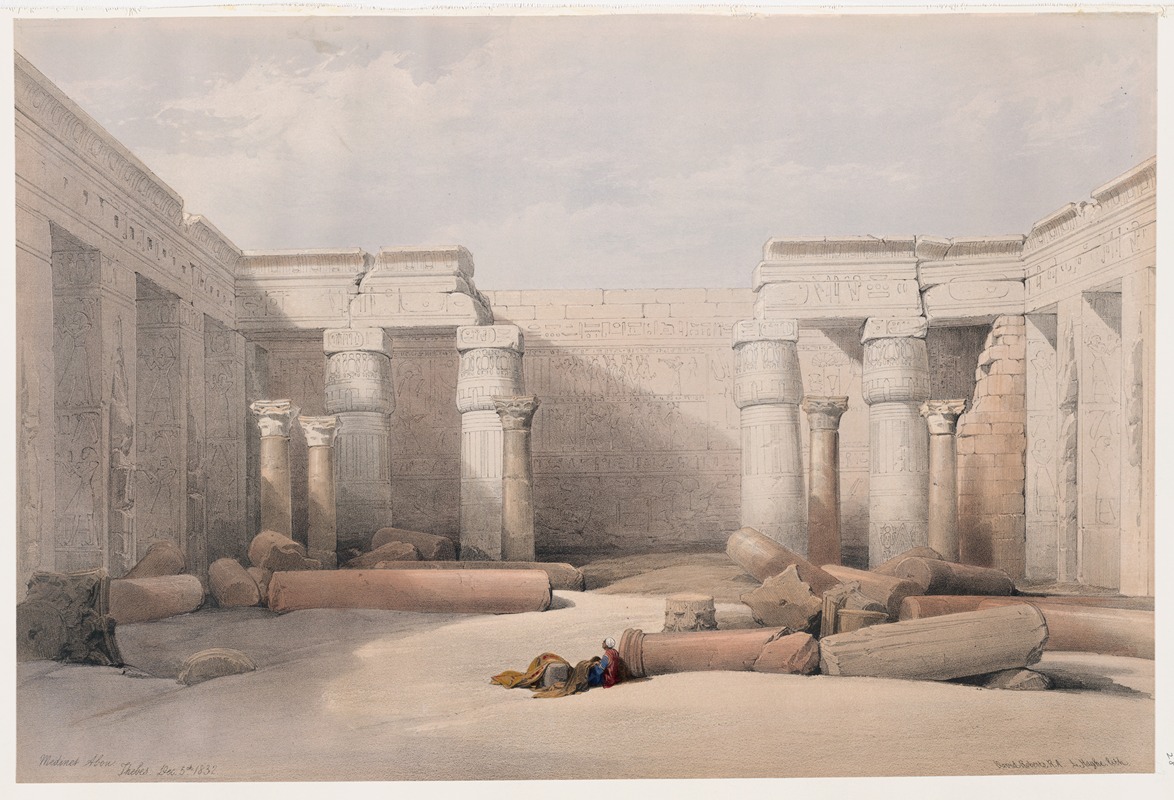
Medinet Abou [Medinet Habu], Thebes. Dec. 5th, 1832.
A hand-painted replica of David Roberts’s masterpiece Medinet Abou [Medinet Habu], Thebes. Dec. 5th, 1832., meticulously crafted by professional artists to capture the true essence of the original. Each piece is created with museum-quality canvas and rare mineral pigments, carefully painted by experienced artists with delicate brushstrokes and rich, layered colors to perfectly recreate the texture of the original artwork. Unlike machine-printed reproductions, this hand-painted version brings the painting to life, infused with the artist’s emotions and skill in every stroke. Whether for personal collection or home decoration, it instantly elevates the artistic atmosphere of any space.
David Roberts' artwork Medinet Abou [Medinet Habu], Thebes. Dec. 5th, 1832 is a depiction of the ancient Egyptian temple complex of Medinet Habu, located on the west bank of the Nile River in Thebes (modern-day Luxor). This painting is part of Roberts' extensive series of works documenting the architecture and landscapes of Egypt and the Near East, created during his travels in the region in the early 19th century.
David Roberts (1796–1864) was a Scottish painter and lithographer renowned for his detailed and romanticized depictions of historical and architectural sites. In 1838, he became one of the first European artists to travel extensively through Egypt and the Holy Land, producing sketches and studies that would later serve as the basis for his famous lithographs and paintings. His works were instrumental in introducing European audiences to the grandeur of ancient Egyptian monuments and the landscapes of the Middle East.
The Medinet Habu temple complex, which Roberts depicted in this artwork, is one of the best-preserved temples in Egypt. It was primarily constructed during the reign of Pharaoh Ramesses III in the 12th century BCE and served as both a mortuary temple and a fortified administrative center. The site is notable for its massive pylons, intricate carvings, and detailed reliefs that document military campaigns, religious rituals, and daily life in ancient Egypt.
Roberts visited Medinet Habu during his journey through Egypt in 1838, and the date "Dec. 5th, 1832" in the title of the artwork likely refers to the date he later assigned to the scene or composition, rather than the actual date of his visit. The painting captures the imposing architecture of the temple complex, surrounded by the arid landscape of Thebes. Roberts' works often emphasized the scale and majesty of ancient structures, and this piece is no exception, showcasing the grandeur of Medinet Habu against the backdrop of the Egyptian desert.
The artwork was later reproduced as part of Roberts' monumental publication The Holy Land, Syria, Idumea, Arabia, Egypt, and Nubia, a series of lithographs published between 1842 and 1849. These lithographs, based on Roberts' original sketches and paintings, were highly popular in Victorian England and remain significant for their historical and artistic value.
Roberts' depiction of Medinet Habu is celebrated for its accuracy and attention to detail, providing a valuable visual record of the site as it appeared in the 19th century. His works continue to be appreciated for their artistic merit and their role in documenting the cultural heritage of the regions he visited.





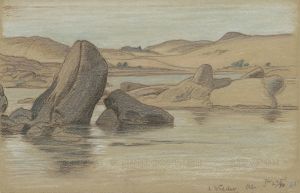
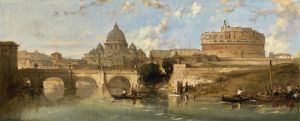
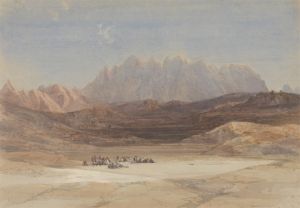



![Lateral view of the temple called the Typhonæum, at Dendera [Dandara].](/imgs/217507/s/david-roberts-lateral-view-of-the-temple-called-the-typhonaeum-at-dendera-dandara-b378b9d7.jpg)
![One of two colossal statues of Rameses [sic] II. Entrance to the Temple at Luxor.](/imgs/217522/s/david-roberts-one-of-two-colossal-statues-of-rameses-sic-ii-entrance-to-the-temple-at-luxor-473c42e1.jpg)
![Temple of Isis on the roof of the great temple of Dendera [Dandara].](/imgs/217547/s/david-roberts-temple-of-isis-on-the-roof-of-the-great-temple-of-dendera-dandara-fd95528e.jpg)
